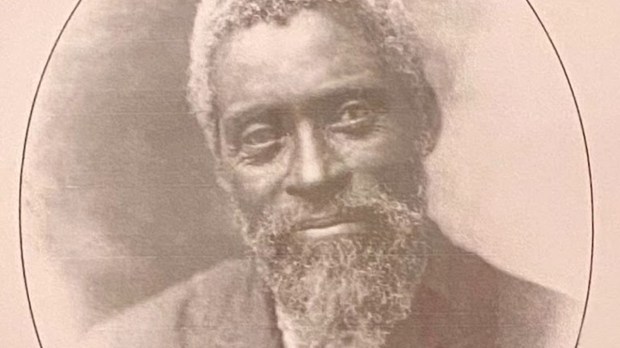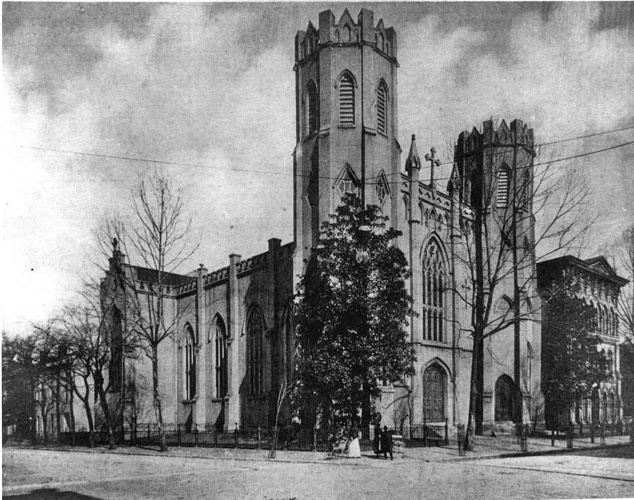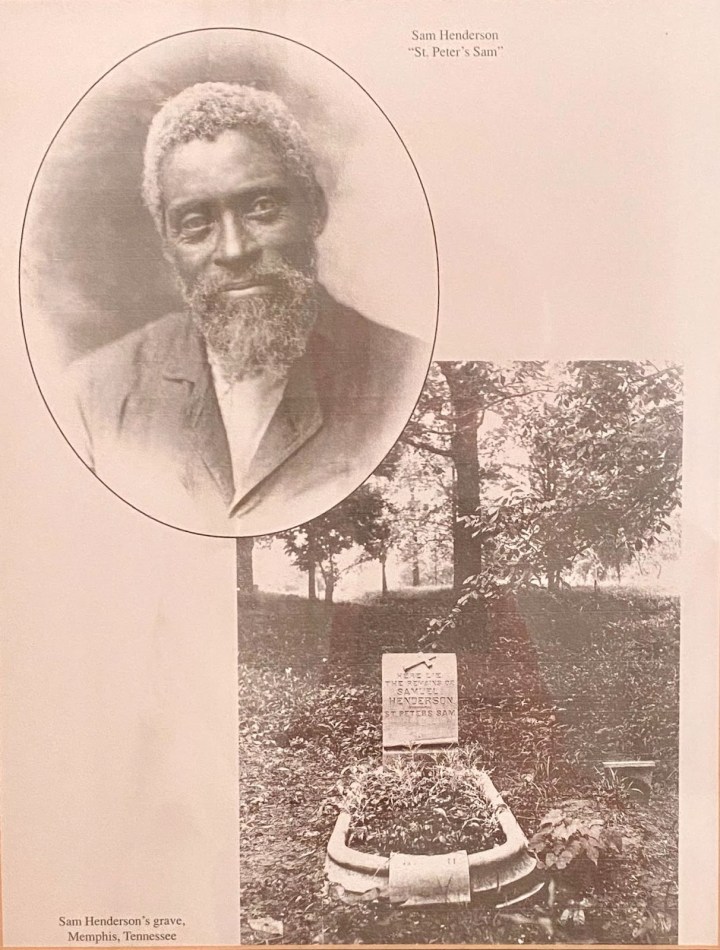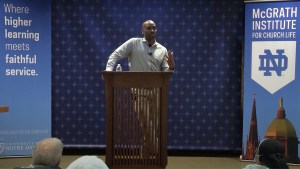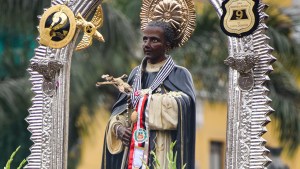The parishioners of Ss. Peter and Paul Catholic Church (commonly called St. Peter’s) in Memphis knew Samuel Henderson in life as “Uncle Sam.”
However, he was more widely known—and is remembered today—by the name that tops his monument in what used to be the ‘Free Negro Section’ of Calvary Cemetery: “St. Peter’s Sam.”
A formerly enslaved Black Catholic convert, Henderson served the Church as a groundskeeper, a hero, and — in my opinion — a saint.
From slavery to a Solemn Requiem Mass
Sam’s life began around 1822 in slavery, and ended in 1907 with a full church and a Solemn Requiem Mass celebrated at the high altar of St. Peter’s—after which he was carried to his grave by 8 friars from the Order of Preachers (aka the Dominicans).
What happened within those 85 years to cause such a man to be granted the highest solemnity, and the devotion of a parish composed of Irish Catholics in the American South?
Sam’s relationship with the Church began in the first decade after the Civil War and with his arrival in Memphis, though how and when he arrived are unclear. During this period, Henderson, a recently freed slave, ministered to a small Baptist congregation just down the road from St. Peter’s.
He was known to come to the parish and listen to the early Sunday Mass, where he would hear homilies from the Dominicans. Taking them as his inspiration, would then return to his own flock and preach the Gospel. Perhaps as a result of the friendship and preaching of the friars, Henderson and his wife eventually converted to Catholicism, and he joined the parish as their handyman—a position he held for over 30 years.
The Memphis fever
Henderson worked with the friars through the darkest decade in Memphis history, the 1870s, and won the undying love of the order and the city’s Irish population. Yellow fever burned through the city in the outbreaks of 1873, 1878, and 1879, killing 7,500 Memphians and causing the collapse of civic life.
In the wildfire-like fever season of 1878, an estimated 25,000 individuals—mostly White, wealthy, and Protestant—fled before the city found itself blockaded by federal troops. Civil government collapsed throughout Memphis, as municipal officials fell sick or abandoned their posts. Only 7 of the city’s 41 police officers were capable of mustering for duty, and the rest were overwhelmed. As the state legislature revoked the city charter, refugee camps dotted the countryside and schools quickly became hospitals, orphanages, and later, morgues.
When the Memphians of means fled, only the poor and those who cared for them, body and soul, remained. The poor were composed of the recently emancipated, the small Jewish population, and the Irish immigrants of the “Pinch District.” The ministers who stayed included the rabbis, the Episcopalian Sisters, and the Catholics, who worked together in a feat of ecumenical cooperation.
For example, when a dying Catholic was encountered, a rabbi ran at once to St. Peter’s to fetch a priest, and then accompanied him as he brought the dying person Viaticum and the comfort of the sacraments.
All told, 45 priests, religious brothers, and women religious died doing their duty alongside their brothers and sisters from other faith traditions.
Protecting the friars with his life
Henderson appointed himself protector of the Dominican friars, whom he would accompany as they saw to the care of the orphans, made sick calls, and brought Jesus to the dying. Due to the civic collapse, the city had also become more dangerous and Henderson worried for the safety of the priests. As night fell, he always escorted them by the light of his lamp.
This dedication came in spite of the threat to Henderson’s own safety, as he was a Black man in a city rife with violence, that had seen and would see race riots and lynchings. He was also a Catholic and a known friend to the Irish in a part of the country where anti-Catholic bigotry and anti-immigrant violence served as additional sources of segregation.
If that wasn’t enough, Henderson chose again and again to go into the homes of those dying from a disease that was incredibly contagious and deadly, in an age before there was modern PPE to protect him. The friars, who saw Henderson’s devotion but worried for his safety, would plead for him to return to the parish—but he always refused.
Out of love, Henderson continued to go, guarding and protecting his beloved friars in life and in death as, one by one, the friars who had pleaded for Henderson to stay safe succumbed to the fever themselves. Henderson, always a friend to the priests, nursed and cared for each one of them as they slipped into final sleep.
Ultimately, he cleaned the bodies of 9 priests, and vested 8 of them in the habit of St. Dominic one final time.
A saint-to-be?
After the last of the fevers receded, Henderson lived another 30 years as a beloved member of the parish, where he was adopted by the Irish parishioners who never forgot his service during the dark days of the epidemic.
He died on February 13, 1907, at the age of 80.
The Dominicans also never forgot Henderson, burying him with full honors and leading the parish in paying for his burial and memorial. Friars of the province who reside outside of the city have also maintained a tradition of praying at Henderson’s grave when they pass through Memphis.
The only known photo of Henderson remains in the Crystal Room at St. Peter’s to this day.
Fr. John Vidmar, OP, has written extensively on Henderson’s era in Bury Me in the Sunshine: The Yellow Fever Epidemics of Memphis, a book released in 2020 concerning the role Catholics played in the crisis. This article is indebted to his research.
Fr. Vidmar has called Henderson “indomitable” and believes (along with many of his fellow Dominicans) that he should have a sainthood cause opened—like the now-canonized St, Martin de Porres, the legendary Black Dominican friar whose national shrine has graced St. Peter’s since 2001.
As a parishioner at St. Peter’s, I believe that Henderson can be seen as nothing but a saint, who lived his life with heroic virtue by repeatedly choosing to walk into what seemed like certain death countless times.
Why? Simply because he is, like Christ his master, a light that shines in the darkness, and the darkness can not comprehend it.
This article was printed with permission from Black Catholic Messenger.
